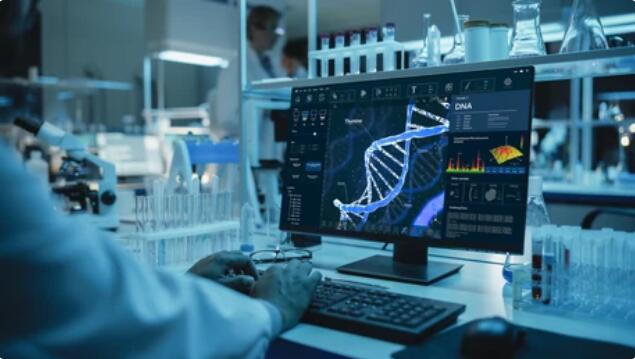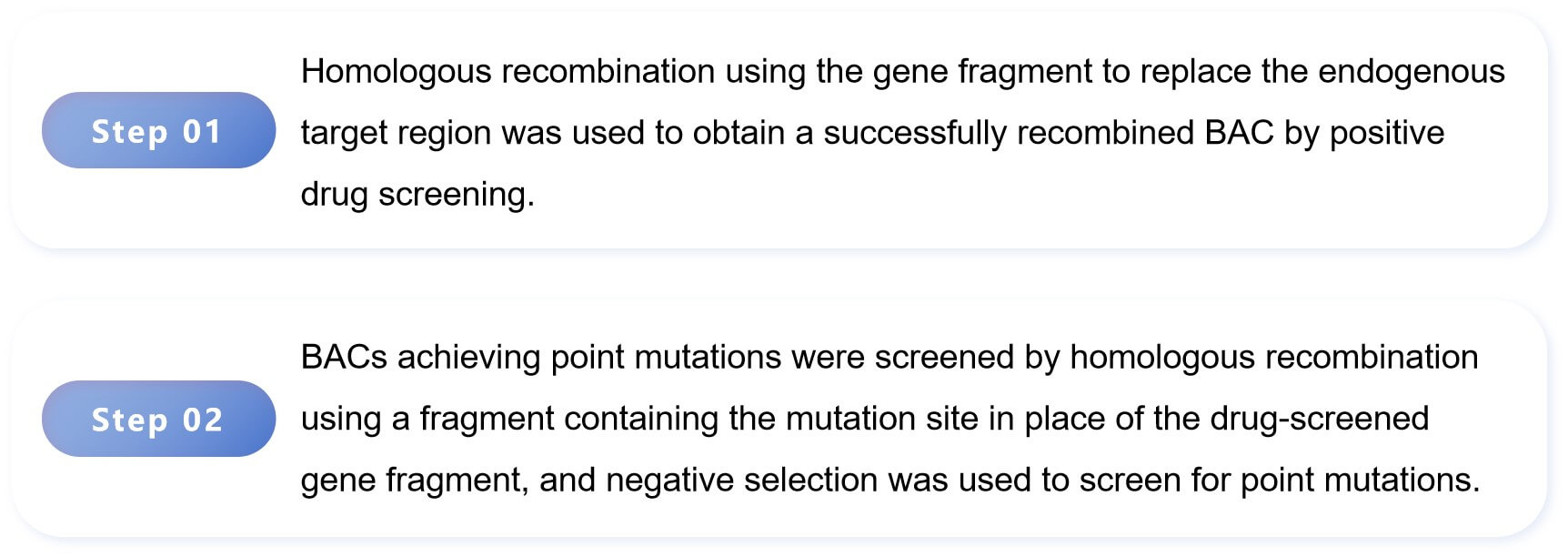Bacterial artificial chromosome (BAC) is a cloning vector system that carries large segments of DNA for human, animal, and plant genome library construction. BAC has the advantages of large insertion fragments, low chimerism rate, good genetic stability, ease of manipulation, etc. Through BAC modification, Lifeasible can place reporter genes in BAC-specific regulatory sequences. It is also possible to introduce point mutations into target genes, transfer fragments from the BAC to plasmid vectors, and add screening markers to the BAC backbone.

Our experienced technical team will design a detailed and efficient BAC modification program according to your needs. You can send us the BAC-containing E. coli directly. If you have any doubts about the BAC to be used, provide us with the ID number of the BAC you need, and we can also find a suitable BAC for you according to the gene you are studying.
It can be used to introduce either large fragments, such as a reporter gene for tracing after the promoter of a gene, or minor changes, such as point mutations.
This method utilizes gene fragments expressing drug screening markers for positive and negative screening. It can be used to introduce small changes (e.g., point mutations) into the BAC without leaving an FRT scar sequence.

When using BAC for transfection into cells, screening markers on the BAC backbone will facilitate its being screened or traced in cells, facilitating the isolation of cells containing stably integrated BAC by pharmaceutical screening.
We can transfer any region of the BAC (up to 60 kb) onto a plasmid vector for a separate study.
We identify BAC-modified regions by sequencing. Due to the presence of repetitive sequences, BAC may undergo fragment deletions. To reduce this possibility, we will re-transform the modified BAC and select to obtain a single clone, which will be confirmed to be free of large fragment deletions by PCR amplification of multiple sites on the whole BAC.
The final delivery form of this service is E. coli containing the modified and validated BAC.
BAC building and modification services involve a high volume of work with complex and error-prone protocols. It can take up to a year for most people to do it themselves and may require constant reagent sourcing, learning, and problem-finding to be successful. For better allocation and time savings, leave the tedious work to Lifeasible. We will centralize our experienced scientists to provide fast and accurate service, so feel free to contact us for your solution.
Lifeasible has established a one-stop service platform for plants. In addition to obtaining customized solutions for plant genetic engineering, customers can also conduct follow-up analysis and research on plants through our analysis platform. The analytical services we provide include but are not limited to the following:
Get Latest Lifeasible News and Updates Directly to Your Inbox
Adaptive Evolutionary Mechanism of Plants
February 28, 2025
Unraveling Cotton Development: Insights from Multi-Omics Studies
February 27, 2025